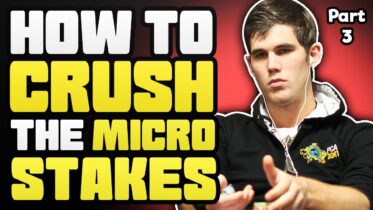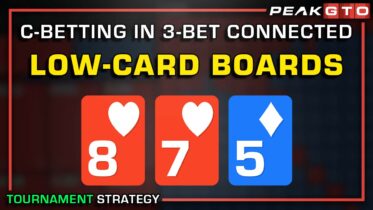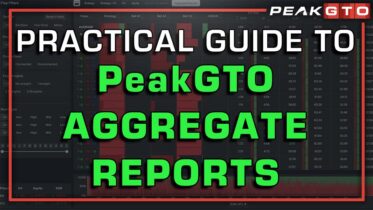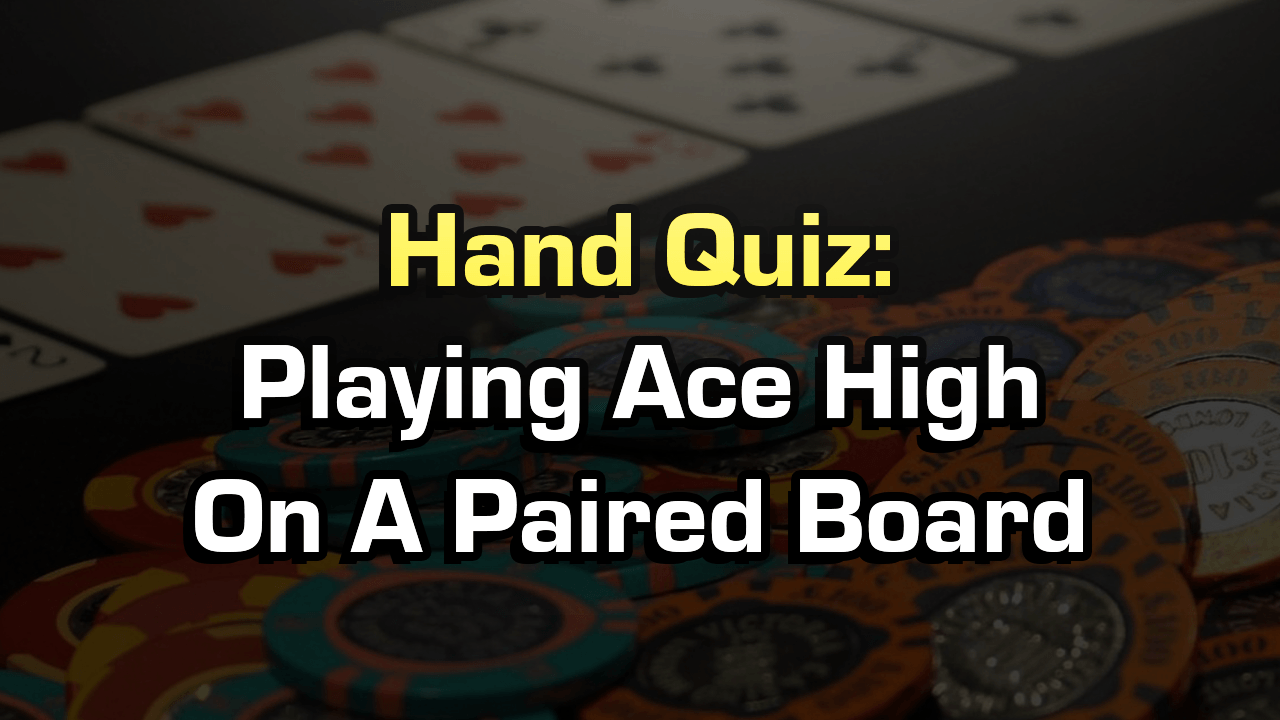Making final tables in online poker tournaments at the micro stakes starts with recognizing what mistakes players make and capitalizing on them. If you have made it this far in my How To Beat Online Micro Stakes Poker Tournaments series, you have studied preflop and flop micro stakes poker tournament strategy, but now it is time to review how to play the turn.
Turn decisions can be quite difficult as there is always one more card to come. If a poker hand makes it to the turn, the pot is oftentimes quite big, making mistakes detrimental to a poker player’s bankroll. As with my previous micro stakes tournament articles, put yourself in each hand scenario and consider how you would play each spot.
Micro Stakes Poker Tournament Strategy: Facing A Loose-Passive Player
The blinds are 500/1,000 and the lojack limps into the hand. You call from the small blind with J♥-10♥ and a stack of 28,500. The big blind checks.
The flop comes J♠-7♦-3♥, following a check from you and the small blind the lojack bets 1,500. Only you make the call.
Hand Analysis: When The Loose-Passive Player Bets Big
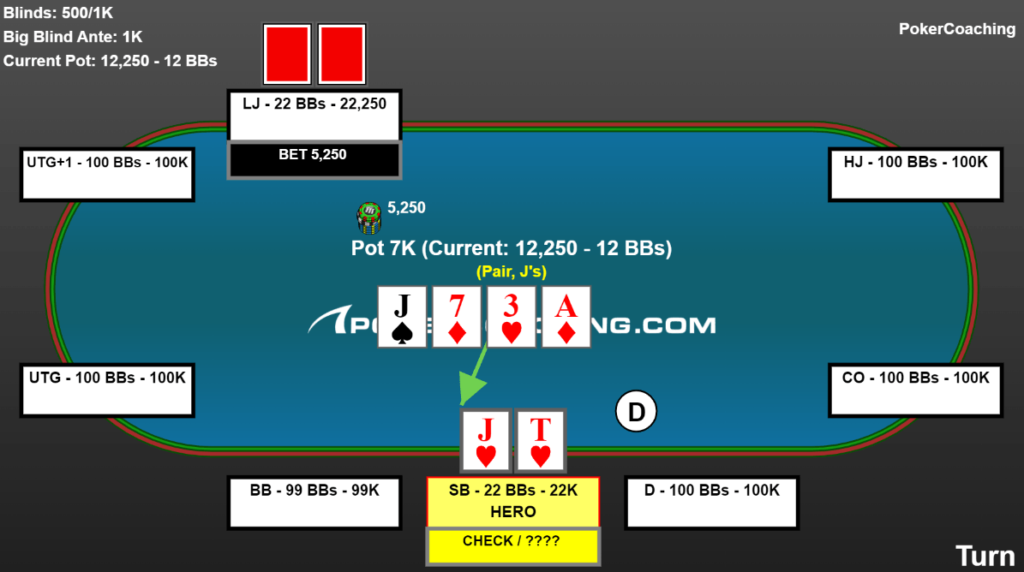
Following the A♦ on the turn, you check and your opponent bets 5,250.
When your opponent sizes up with the 5,250 bet on the turn, ask yourself a series of questions, the first question being “do they do this with X?” Do you think they have a value hand you beat, like a jack with a worse kicker? Probably not.
Did they bet big holding some kind of draw? Considering the combinations of flush draws in your opponent’s range, while they could have a flush draw it is unlikely with the A♦ on the turn.
Is your opponent capable of turning a pair into a bluff? With little to no information on your online poker micro stakes opponent, you cannot say with confidence that they are bluffing.
Players who limp into pots, whether it be in online cash games or tournaments, often fall within the play style of loose and passive. When loose and passive poker players are all of a sudden bombing the pot, warning bells should go off in your head. Exploiting your opponents means more than simply winning their chips, it’s also preventing them from winning yours.
When loose-passive players finally get active, it’s usually because they have a good hand. Even though you hit top pair on the flop, it is okay to give up on this particular hand when your opponent keeps firing, in fact, it is the right play! Being able to make fundamentally sound folds and recognize when your opponents are strong is an essential exploit to use in micro stakes online tournaments.
Micro Stakes Poker Tournament Strategy: Top Pair-Top Kicker Out Of Position
The blinds are 500/1,000 and you have a stack of 30,000 in the big blind. The hijack raises 2,000, it folds around to you in the big blind holding A♥-K♣. You re-raise 6,500 and the lojack calls.
The flop is A♣-Q♦-7♦, you and your opponent both check.
Hand Analysis: Playing Top Pair-Top Kicker Out Of Position
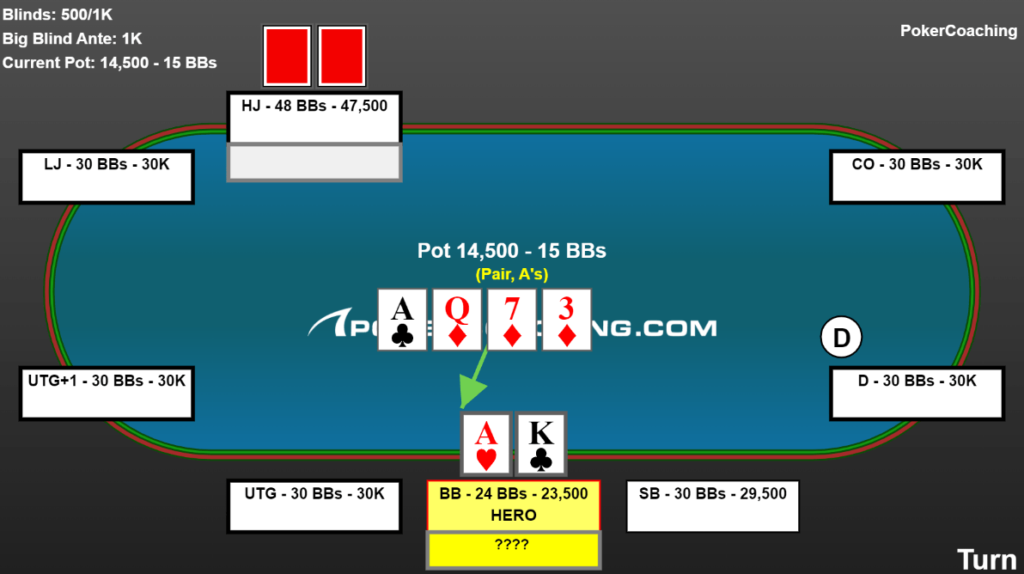
The turn is the 3♦. With top pair-top kicker, it is time to go for some value. You bet 6,500, and your opponent folds.
When your opponent checks back on the flop, the majority of the time they have junk. If they had anything decent, they probably would have bet. Holding A-K offsuit, you block a lot of hands your opponent may bet with, further decreasing the odds they have a good hand.
When a lot of my students have a good hand, they get discouraged when they check the flop and don’t get action. They feel like they have missed out on a street of value, causing them to bet big on the turn to try and make up for it. Betting big in this spot only makes your opponent’s hand easier to play, as they will only call a big bet with a good hand and fold their bad ones.
Instead of betting big, betting the initial preflop three-bet size of 6,500 is much more likely to get called. A lot of online micro stakes tournament players call too many hands, when you want to add money to the pot, use bet sizes that exploit players’ wide calling ranges.
Micro Stakes Poker Tournament Strategy: Bluffing Tendencies Of Micro Stakes Players
It folds to you in the hijack with 30,000 and the blinds at 200/400. You raise 800 holding A♦-J♣ and get called by both the button and big blind.
The flop comes Q♦-8♥-2♣ and it checks through.
Hand Analysis: Online Micro Stakes Tournament Players Do Not Bluff
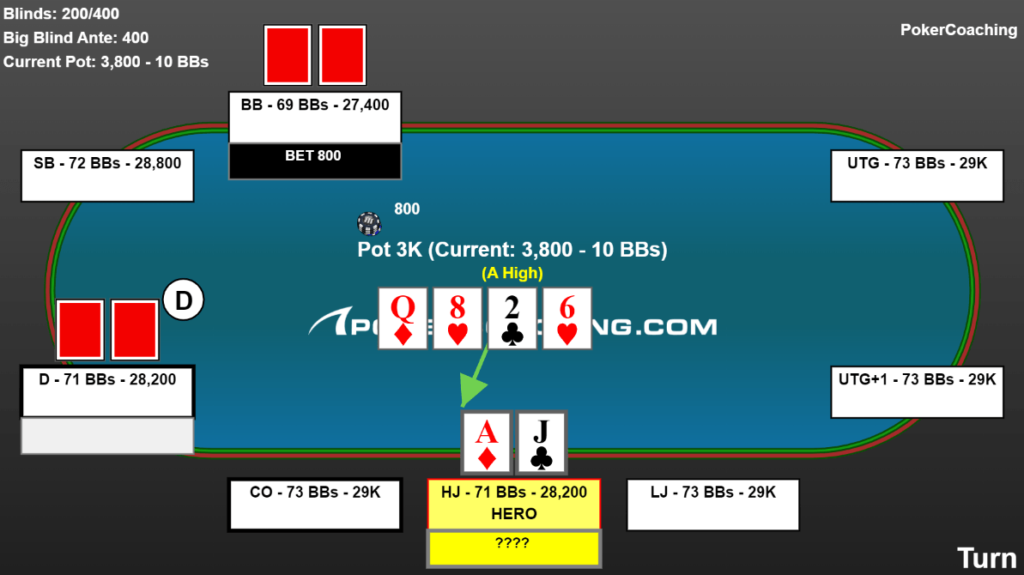
Following the 6♥ on the turn, the big blind leads out with a 800 bet.
Although it is close, this is a spot where you should fold. Remember: the majority of online micro stakes players do not bluff. Your opponent would likely check a weaker ace or a draw to see a free card, by leading out into two opponents they are representing a strong range.
It may be tempting to be stubborn and make the call, but you are much better off folding this hand, living to fight another day.
Micro Stakes Poker Tournament Strategy: Flopping Top Pair
The blinds are 150/300 and UTG+1 you min-raise out of your 28,600 stack with K♦-Q♣. Both the cutoff and the loose, passive small blind call.
The flop comes K♥-J♠-7♥ and the small blind checks. You bet 1,500 and are only called by the small blind.
Hand Analysis: Facing A Turn Lead With Top Pair

With the A♥ on the turn, your opponent leads out for 2,670. Although it may be frustrating, you have to fold this hand. As mentioned earlier in this piece, when loose, passive players are all of a sudden willing to make big bets against you, warning sirens should go off in your head.
Instead of trying to look through the screen a get a soul read on your opponent, ask yourself a series of questions. Do they do this with a hand I beat? Do they do this with Q-J or K-10? Considering the hands you want your opponent to have, it is highly unlikely you are good here.
Making note of your opponent’s tendencies and acknowledging how many draws got there with the A♥ on the turn, this is an easy fold. A major part of exploiting micro stakes online players is not just winning chips but finding exploits that help you make sound folds. Denying your opponents the ability to extract chips from you may be the most important exploit of all!
Conclusion
Being able to build off of each lesson and continuously expand your knowledge will help you greatly at the poker table. The micro stakes are a great place to learn and gain experience without having to play with “scared money”. When you don’t have to worry about your poker bankroll going up in flames, you can implement strategies and exploits you have studied. If you enjoyed this article on exploiting micro states online tournament players on the turn, be sure to read my fourth and final article where I cover how to play the river.
